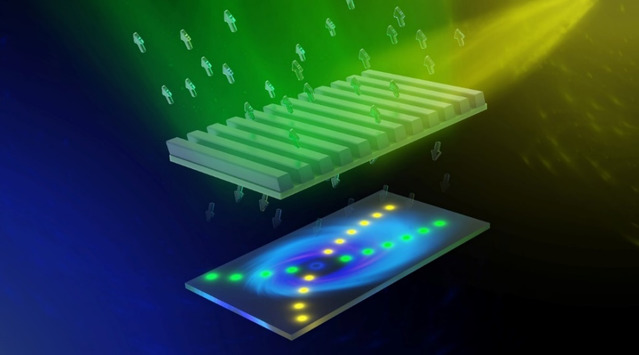In the context of the rapid development of modern technology, chip technology continues to promote innovation and change in various industries around the world. Especially in the fields of artificial intelligence, communication technology, and data centers, processing and transmission speeds are increasingly demanding. In recent years, the emerging technology of photonic chips (photonic chips) has attracted a lot of attention, which uses photons (light) instead of electrons to transmit and process information, showing great application potential. However, whether photonic chips can completely replace existing electronic chips is still a challenging and controversial topic.
The core advantages of photonic chips
1. Higher speed
One of the biggest advantages of photonic chips is the speed at which light can be transmitted. Light travels faster in a medium as compared to the speed at which electrons flow in a wire. This enables photonic chips to reach higher speeds in data transmission and computing. For example, in communication networks and data centers, photonics can support large-scale data transmission, significantly improving system performance.
2. Lower power consumption
Another advantage of photonic chips is their lower energy consumption. Unlike electronic chips, photonic chips generate less heat during transmission and therefore require relatively low heat dissipation and power management. In today's large-scale computing tasks, especially in the fields of artificial intelligence and cloud computing, reducing power consumption has become the focus of the industry, and photonic chips are attractive due to their efficient energy utilization.
3. More bandwidth
Photons are capable of carrying signals of multiple wavelengths at the same time, which allows photonic chips to provide greater data bandwidth than electronic chips. In areas such as big data and high-performance computing, where data throughput is critical, the high bandwidth advantage of photonic chips makes them a potential core technology to drive future computing performance.

Figure: Can photonic chips replace electronic chips?
Challenges for photonic chips
Despite the significant technical advantages of photonic chips, they still face many technical and economic challenges on the way to completely replace electronic chips.
1. Integration issues
At present, the integration of electronic chips has developed to an extremely high level. Driven by Moore's Law, semiconductor processes have reached 3nm or even smaller process nodes, and electronic chips can integrate billions of transistors to provide massive computing power. In contrast, the integration and large-scale production technology of photonic chips are not mature enough. In order to realize the large-scale commercial use of photonic chips, it is also necessary to solve the problem of how to integrate optical and electronic components on the same chip.
2. The manufacturing process is complex
The manufacturing process for photonic chips is more complex than traditional electronic chips, especially when it comes to producing optical components. At present, the top companies in the chip manufacturing industry (such as TSMC, Samsung, etc.) are very mature in semiconductor manufacturing processes, but the manufacturing of photonic chips still needs to develop more advanced and economically feasible processes. In addition, the development trend of optoelectronic hybrid chips shows that how to effectively integrate photonic technology with existing electronic chips is also a technical problem that needs to be overcome.
3. Cost factor
Photonic chips are still expensive to manufacture, which is one of the main barriers to their adoption in large-scale applications. Compared to electronic chips, which are already mature and have economies of scale, the production cost of photonic chips makes it difficult to compete with electronic chips in the short term. While photonic chips may have a price/performance advantage in specific HPC areas, their high cost is still a limiting factor for most consumer markets.
4. Limitations of the application scenario
The advantages of photonic chips are more reflected in high-speed data transmission and low-power applications, such as data centers, optical communications and other scenarios. However, in the fields of general computing, logic processing, and mobile devices, electronic chips still have irreplaceable advantages. Especially in scenarios with extremely high power density and computing density requirements, electronic chips are still a more mature solution. Therefore, the application range of photonic chips is still relatively limited.
Future developments: the trend of optoelectronic fusion
Going forward, the combination of photonic chips and electronic chips will become a more realistic solution, rather than photonic chips completely replacing electronic chips. Researchers are actively developing "photoelectric hybrid chips" that combine photonic technology with traditional electronic components to take advantage of the advantages of fast photon transmission and high energy efficiency, while retaining the advantages of electronic chips in terms of logic processing and computing power.
In some specific areas, photonic chips have the potential to play a greater role. For example, photonics technology has a promising application in data communication and cloud computing scenarios that require high bandwidth and low latency. In the construction of 6G communication networks in the future, photonic chips may also become one of the key technologies to meet the needs of massive data transmission.
Despite the many advantages of photonic chips and their great potential, it is not realistic to completely replace electronic chips in the short term. Electronic chips continue to dominate in terms of integration, manufacturing processes, cost control, and a wide range of applications. However, photonic chips, as a supplement to electronic chips, have important application prospects in high-speed communications, data centers, and high-performance computing. In the future, optoelectronic hybrid chips are expected to become an important development direction of the industry and promote the transformation of next-generation computing and communication technologies.






